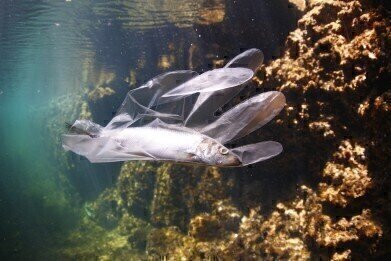Water/Wastewater
Have Microplastics Reached a 'Steady State' in the Ocean?
Feb 22 2021
It’s common knowledge that our consumption of plastic has continued to increase over recent years and decades, with much of the plastic generated only designated for single-use purposes. While governments across the globe have attempted to introduce schemes to curb the improper disposal of plastic waste, recycling rates remain depressingly low and a significant proportion of all plastics eventually find their way into our seas and oceans.
Despite these discouraging premises, it may be possible that the overall amount of plastic in our marine environments has levelled off in recent years. Those are the findings of a study conducted by the French oceanographic research institute IFREMER, which pored over a wide range of previously existing marine litter data to come to its conclusions. However, lead author Dr Francois Galgani was quick to temper any optimism that may be engendered from the paper, given that alternative explanations do exist.
Plastic pollution levelling off?
Dr Galgani analysed an extensive number of studies into the amount of plastic refuse in our seas and oceans and found that the majority of them found similar levels of pollution since the year 2000. For example, the records drawn up by the Continuous Plankton Recorder Survey – one of the longest running and most widely respected marine biology reporting programmes in the world – found that plastic pollution levels had risen rapidly between the 1950s and the turn of the millennium.
However, they have not shown a marked increase in the last 20 years, despite the fact that we are producing more plastic than ever today. An alarming 380 million tonnes of plastic are produced every single year, with around half of that total designated for single-use purposes. The average lifespan of a single-use item is a mere 15 minutes, but they can persist in our environment for many, many years.
No cause for celebration just yet
While Dr Galgani’s findings could be interpreted as evidence that plastic pollution initiatives are having their desired effect, the researcher was quick to point out there could be a number of other explanations for the phenomenon. For example, it’s highly possible that the plastics have simply degraded into smaller, potentially more dangerous microplastics, which have then either been ingested by marine animals or become undetectable to standard methods of pollution monitoring.
Alternatively, it’s also feasible that the pollution has simply been swept to remote parts of the ocean which are not accessible by those same monitoring techniques. In any case, the simple truth of the matter is that we are already generating and consuming too much plastic, especially single-use varieties. With the turmoil of the last 12 months, one environmental consequence of the coronavirus pandemic has been a sharp upturn in the use of personal protective equipment (PPE), much of which is composed of single-use plastics. Therefore, the IFREMER study should perhaps be received with a pinch of salt and should certainly not be used as justification for continuing with our highly polluting habits in the future.
Digital Edition
IET 34.2 March 2024
April 2024
Gas Detection - Biogas batch fermentation system for laboratory use with automatic gas analysis in real time Water/Wastewater - Upcycling sensors for sustainable nature management - Prist...
View all digital editions
Events
Apr 30 2024 Melbourne, Australia
Apr 30 2024 Birmingham, UK
May 03 2024 Seoul, South Korea
May 05 2024 Seville, Spain
May 06 2024 Minneapolis, MN, USA


















